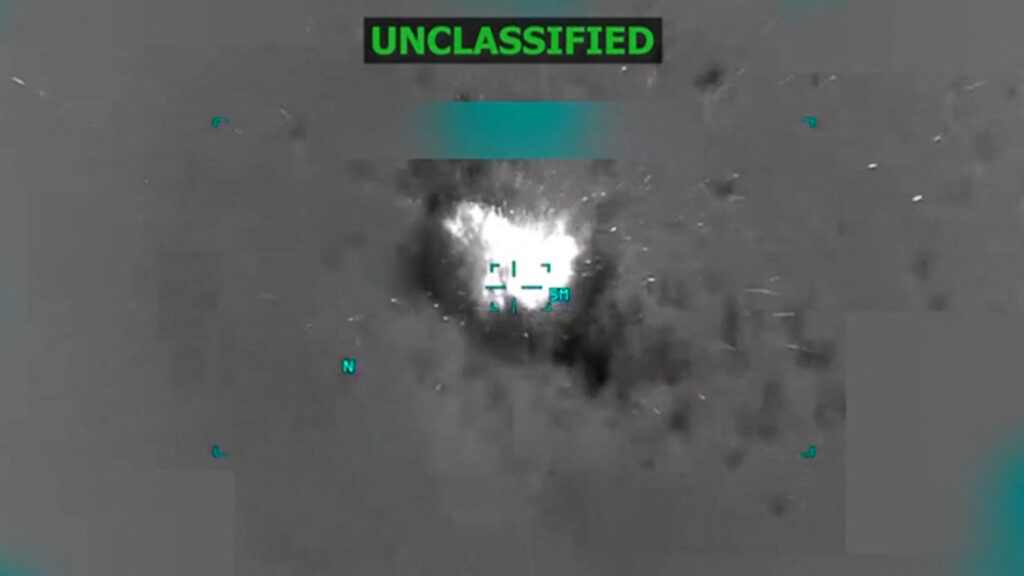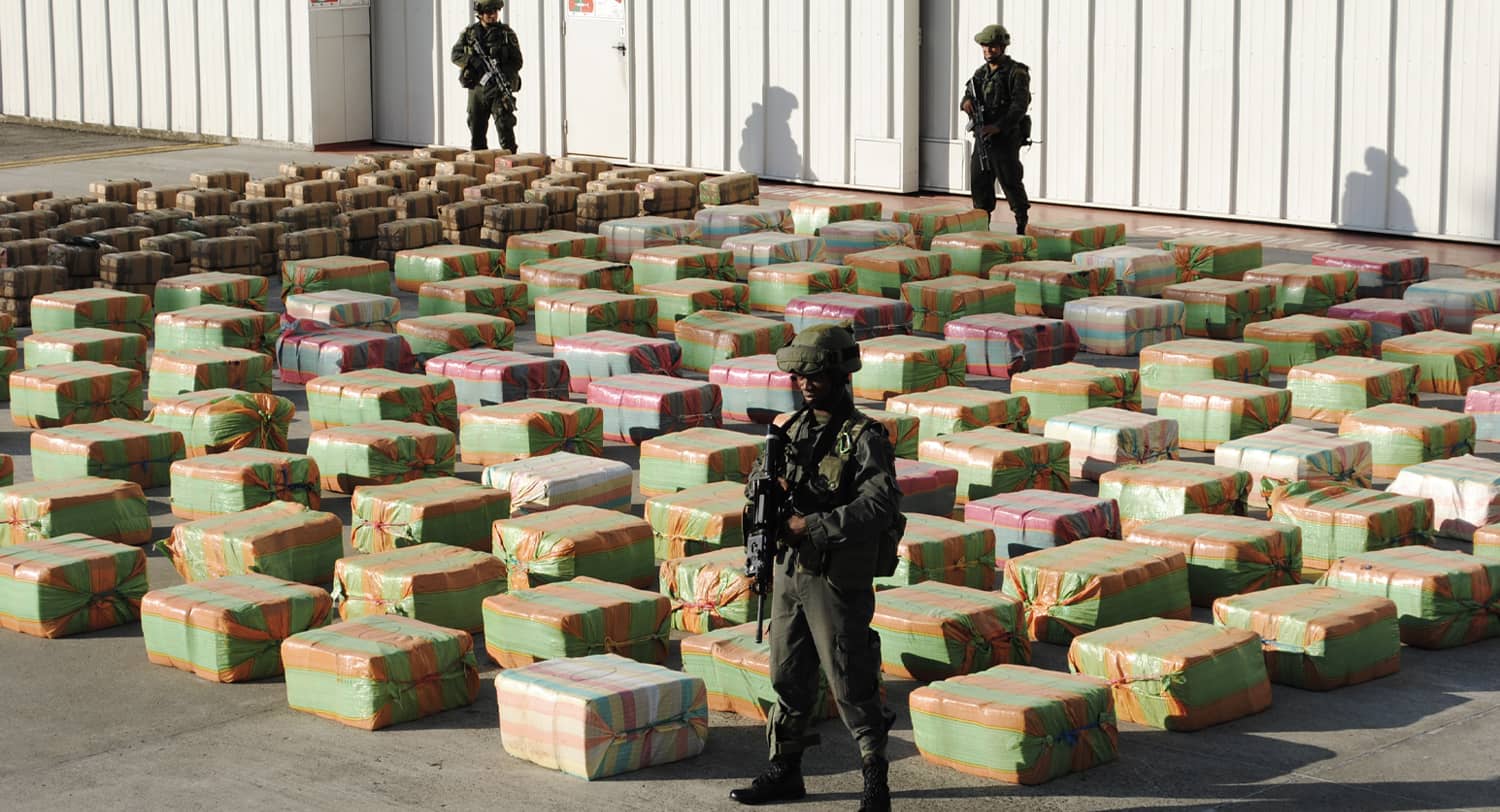The fight against narcoterrorism has returned to the vocabulary of American policymakers. The Trump administration has deployed Navy, Air Force and Marine Corps assets to the Caribbean and destroyed several drug-carrying vessels, just the beginning of a campaign according to the President. This time the US effort is centered on Venezuela, but it is nevertheless relevant to revisit the results of an earlier fight in Venezuela’s neighbor Colombia.
Twenty-five years ago, under the rubric of Plan Colombia, the US began providing massive military, police, and economic assistance to the Colombian government then facing Marxist insurgents enriched by controlling cocaine trade. Let’s revisit the US record of results from Plan Colombia, to date America’s largest and longest narcoterrorism fight.
Initially a Second-Tier Concern
During the 1980s, the United States supported Colombia’s counternarcotics efforts as part of the “war on drugs.” The Drug Enforcement Agency worked with local counterparts against the powerful Medellin and Cali cartels in response to the surge of cocaine entering the United States. Additionally, the State Department led an effort to train and equip the Colombian National Police. Aerial spraying of cocaine fields with the herbicide glyphosate formed a key part of this strategy.
This police-led counternarcotics effort was largely separate from Colombia’s struggle, carried out principally by its military, against the Marxist guerrilla groups which had emerged in the 1950s and 1960s. The two largest were the Revolutionary Armed Forces of Colombia (Spanish initials FARC) and the National Liberation Army (ELN) although there were others, notably the People’s Liberation Army (EPL) and the April 19 Movement (M-19), a populist urban guerrilla group which was eventually crushed.
During the 1970s and 1980s, the government in Bogotá did not regard the FARC and ELN as serious national threats since they operated largely in remote rural areas. They were similarly ignored in Washington, where the Latin America focus was on El Salvador’s civil war and on Nicaragua with the rise to power of the Sandinista National Liberation Front.
The Origin of Plan Colombia
As the 1990s progressed, the police-led approach towards Colombia’s security became untenable. The guerrilla groups used military muscle first to exact tribute from narcotics traffickers and then to participate directly in the narcotics business. At the same time, rural property owners sponsored private vigilantes to combat the Marxist guerrillas, and over time vigilantes morphed into “paramilitaries” forces tied to the narcotics trade.
And narcotics money increasingly penetrated Colombian political life. The administration of President Ernesto Samper, 1994-1998, was marked by accusations that narcotics traffickers financed his campaign, which led the United States to “decertify” Colombia as not fully cooperating on combating narcotics, severely restricting US assistance. Colombia’s security forces, under-financed, demoralized, and plagued with corruption, did not take on guerrillas who had gained effective control of large swaths of Colombia’s countryside.
By the end of Samper’s term both the local political and economic elite and US policymakers had become alarmed at the deteriorating situation. The prospect of guerrillas entering Bogotá in triumph, just as Castro had done in Havana in 1959 and the Sandinistas in Managua in 1979, was not unthinkable. Samper’s successor Andrés Pastrana, in office 1998-2002, reached out to the United States in search of a major assistance package to stabilize his country.
His initial request to the Clinton administration was principally for economic development assistance to wean rural Colombians away from cultivating coca. However, in discussions with the United States, greater emphasis was placed on regaining government control of the countryside from the guerrillas, paramilitaries and drug trafficking organizations. An initial package of $1.3 billion in assistance, dubbed Plan Colombia, gained bipartisan support in the Congress, where it was sold largely as a way to stop the flood of cocaine into the United States rather than as a counter-insurgency effort.
Some Success Against the Guerillas
Initially, Plan Colombia most visibly involved helicopters for the military and the police, which included upgrading bases for them to operate in remote areas. Training and equipment also came for Colombia’s ground forces, police and navy, enabling it to operate riverine patrols in roadless jungle areas. Intelligence support was also provided.
While the bulk of its funding was security-related, Plan Colombia also funded “alternative development” for coca farmers to switch to other crops, even as aerial spraying of coca fields continued. Separately, the United States bolstered Colombia’s broader economy with the negotiation of a free trade agreement which supported employment-generating sectors such as Colombia’s cut flower and garment industries.
Pastrana was succeeded by Álvaro Uribe, 2002 to 2010, a hardline opponent of the guerrillas and enthusiastic supporter of Plan Colombia. He ended peace talks with the FARC and abolished the so-called “demilitarized zone,” a large, lightly populated area in which the military and police had been prohibited from undertaking operations while desultory talks took place.
Uribe passed a tax increase to pay for the enhanced security effort, showing that Colombia’s middle and upper classes were willing to make sacrifices to support what he termed “democratic security.” US support totaled over $10 billion from 2000 to 2018 and, although decreasing in recent years, it has remained substantial, with $377.5 million in fiscal year 2024.
Plan Colombia was successful against the Marxist guerillas. In the face of near constant pressure from the newly mobile, better trained and equipped security forces, the FARC and the ELN lost their grip on many areas of rural Colombia. The FARC’s strength was reduced from 20,000 to 7,000 fighters and the ELN from 5,000 to 1,500, according to estimates.
In 2015, under Uribe’s successor Juan Manuel Santos an agreement was reached with the FARC requiring it to disarm and convert itself into a legal political party. Its leadership was to submit to specialized courts which would impose reduced sentences for crimes committed. Land reform and economic development programs were to be instituted to reintegrate FARC fighters. The accord was hailed internationally, including by the United States, which pledged to continue supporting Colombia, while tilting assistance towards social and economic development.
Parallel talks with the ELN did not lead to agreement. Their negotiators insisted on far-reaching changes to the country’s political and economic structures that were unacceptable to the government. And, since the ELN is more decentralized than the hierarchical FARC, it was unclear if any peace agreement could have been sold by its leadership to all of its regional commanders.
… But Not Against Drug Traffickers
The campaign to reestablish security in rural Colombia initially disrupted cocaine production, as the amount of land dedicated to raising coca plants dropped. However, the huge profit margins enjoyed by narcotic exports incentivized producers to find new ways to continue their operations. New transportation routes were found. Coca plants were grown in new regions beyond those in which they had traditionally been raised, thus maintaining overall production levels. In the face of growing health concerns about its use, aerial eradication was severely restricted by Colombia’s courts and ultimately abandoned, while efforts at manual eradication flagged.
Initially, there was also success in demobilizing the United Self-Defense Forces of Colombia (Spanish initials AUC), the principal paramilitary organization, which was in effect a well-armed security force for the drug cartels. Some of its leaders submitted to the judicial system and some members surrendered their weapons.
Nevertheless over time, cocaine production has returned to pre-Plan Colombia levels, even while efforts at interdicting shipments and extraditing narcotics traffickers to the US have continued. The coca-connected paramilitaries have reconstituted under different names. The nexus of narcotics and terrorism has re-emerged. The so-called “FARC dissident” factions have been able to establish themselves, resulting in new rural violence as these groups and the ELN dispute coca-growing territory.
Colombia’s current president, the leftist Gustavo Petro, shares some of the blame for this backsliding. He has reverted to the pre-Plan Colombia approach of limiting the security forces’ resources and freedom of action while fruitlessly pursuing new negotiations in the search for what he has termed “total peace.” On September 15, the Trump administration “decertified” Colombia in a message to Congress criticizing Petro’s leadership for “having failed demonstrably to meet its drug control obligations.”
This marks the first time the US government has “decertified” Colombia from assistance programs since the mid-1990s, though it has been able to continue assistance by invoking a waiver on national security grounds.

The Fight Continues Under Trump
As the Trump administration has raised anew narcoterrorism as a national security threat, the center of gravity has moved to Venezuela, which has become a sanctuary for guerrillas. The Venezuela-based “Tren de Aragua” criminal group has become an important player in narcotics trafficking. Solid evidence connects Venezuela’s military and political leadership to drug trafficking. That said, 60 percent of worldwide coca production takes place in Colombia. Thus, despite the difficulties of working with President Petro, the US cannot overlook the need to continue intensive narco-terrorism work in Colombia.
Plan Colombia enjoyed real, if only partial success. Drug traffickers are inventive and persistent in finding new ways to produce coca and get refined cocaine to market. At a minimum we can expect new routes through Central America or the Pacific to be used more frequently.
A lesson from Plan Colombia: Marxist guerilla groups can be weakened and defeated by targeting their access to narco-profits while strengthening local militaries. Such campaigns also hit the supply-side of the narcotics trade. But they can require sustained, massive outside assistance to the local government. For the foreseeable future, a mix of counternarcotics and counterinsurgency operations aided by US support will be needed and permanent, definitive success against narco-terrorists is a long-term fight that has only just been renewed.

